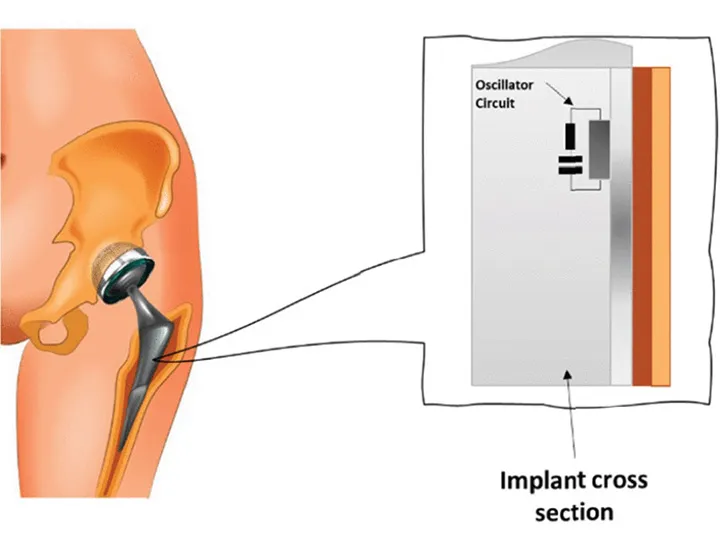Instrumented Hip Implant: A Review
Life expectancy has increased dramatically in last few decades, but elderly healthcare system has not increased proportionately. Bone degeneration is an inevitable causality of old age leading to the need of knee/hip bone implant surgeries. One of the major drawbacks of the current implants is their early failure due to implant wear, loosening, and misalignment. Over 40% of revision surgeries are reported due to implant loosening.
Earliest detection of Total Hip Replacement (THR) implant wear or loosening will not only save the patient from discomfort, it will also improve the success rate of revision surgery. Till recently this is done by radiographic images and clinical investigations. But these are susceptible of poor image quality, observer reliability and low accuracy. With the recent development in sensors technology, wireless communication, energy harvesting and ultra-low-powered devices, the technical barriers to developing more practical instrumented implants have been overcome.
Measurement of parameters such as temperature, force, vibration and moment around the joint implant plays an important role in optimization of a new implant design. Studies have been conducted using single/multiple telemetry units to measure these parameters in-vivo or in-vitro, placing the sensors along the neck and stem of hip implant.
High friction resulting from continuous activities such as walking, cycling may cause heating of hip prostheses, leading to implant wear and loosening. For this a negative temperature coefficient thermistor is used along with a GMR field sensor.
A significant effort has been dedicated for the detection of prosthesis loosening using vibration and Acoustic Emission (AE) techniques. This is achieved by two-axis accelerometer, a 16-bit microprocessor with an RTC and amplifier. In another approach it is done by using an embedded oscillator triggered by an excitation coil. Its vibration is then measured by a piezoelectric vibration sensor. A well-fixed THR implant produces higher damping than a loosened implant. Acoustic Emission was used successfully to understand failure mechanism and damage progression in joint implants.
Some systems proposed intracorporeal excitation and extracorporeal sensing to minimize the number of components inside the implant. However, extracorporeal sensing requires sensor placement near patient and may not be practically suitable for continuous monitoring.
To transmit the sensor data remotely, wireless systems such as Wi-Fi, Bluetooth, radio frequency (RF), and Near Field Communication (NFC) can be used in these orthopedic implants, allowing medical staff to monitor the implants.
Design of a suitable power source remains a challenge in any such system. Energy harvesting by using human motion to generate energy to power up the implantable devices can prove to be a maintenance-free solution but it depends on patients’ physical ability. Wireless power transfer (WPT) like inductive linking is easier to implement.
An ideal instrumented hip implant system will be one where the smart implant is continuously monitoring the implant situation and transmitting the data to the hospital using a mobile phone and a cloud service. While the fundamental technology of smart implants has been established well in recent decades, significant technical challenges still exist to develop more practical, safer, and smarter implants and thereby improve the quality of life for individuals with hip implants.




